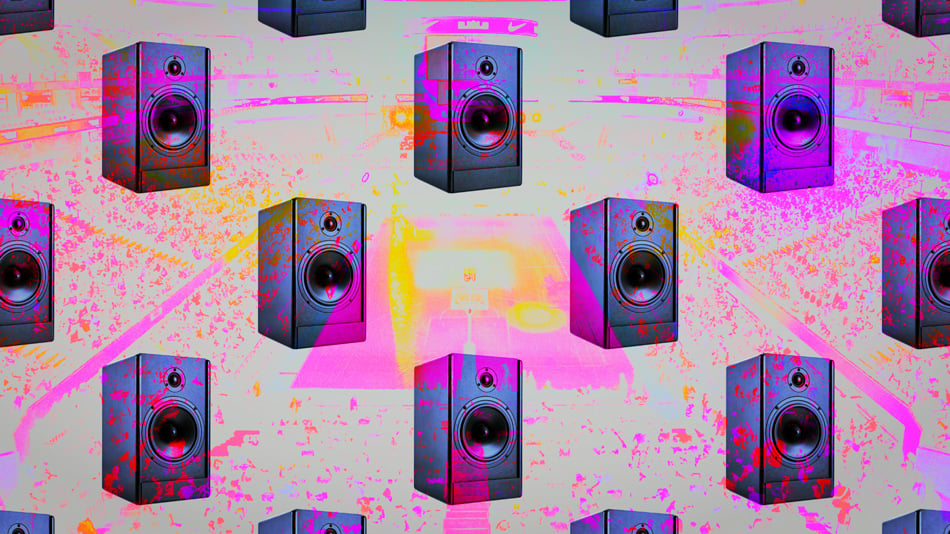Sound & Sports: How Audio Elevates the Game

Sound is to sport what spice is to food – it heightens the senses and elevates the experience. From stadium seats to the couch, audio is used throughout the sports world to strike an emotional chord that deeply engages fans. The same science of sound enables brands in every industry to generate meaningful recall among their audiences. What makes sound so effective in sports, and how can you use it to boost your brand audio game?
Back, Way Back
Sound has a long and storied past with sports. Dating back to the ancient Greeks, music was used at the Olympics as entertainment and to signal the start of events [source: Bibliolore.org]. We’ve since grown accustomed to hearing national anthems played before games; marching bands, stadium organs, and fan interactives playing throughout matches; and entertainment from megastars during halftimes.
It’s also not uncommon for professional leagues to incorporate popular music into the in-stadium/-arena presentation. MLB teams use personalized walkout music for players as they come up to bat. The NHL blasts an array of classic and modern hype tunes at every stoppage. And NBA teams add theater and drama by playing popular hits while the game is in progress.
Beyond that, there’s ambient sounds captured by advanced microphones that enhance the fan experience. Football, soccer, and rugby leagues use specialized parabolic microphones to pick up every detail of the action on the field. NHL teams use boundary and shotgun mics to amplify sounds from the ice – often pumping these sounds into arenas as well as broadcasts. The NBA has mics mounted inside the rims, as well as contact mics in the floor to capture every shoe squeak and ball bounce. All of this amounts to a more entertaining and emotionally stimulating spectator experience.
And then there’s the home-viewing experience. Much of the music played for live crowds is not heard (for licensing reasons) during the broadcast. But that hasn’t stopped broadcasters from reaching at-home audiences using the power of sound. In addition to ambient sounds mentioned above, couch fans are treated to unique audio experiences like mic’ed up athletes, seamless commentary and stats, not to mention a selection of hype-worthy tracks at commercial breaks.
Sports Science & Sound
The use of sound during sporting events is not just for entertainment. Sound is processed in the area of the brain known as the amygdala – which manages, among other things, memory and emotion. If you’ve ever heard a song and instantly been transported back to a key moment in your life, you’ve experienced this process first hand.
Savvy sports franchises and broadcasters alike use music and sound to tap into emotions at specific times creating lasting recall for their teams and networks, respectively. Think about the Boston Red Sox and “Sweet Caroline”, the New York Yankees and “New York, New York”, the NFL’s emotionally charged theme, the iconic music for March Madness, and the unmistakable score for The Masters. Good luck hearing these songs and separating them from their sports counterparts. Here at SAM we work on a number of these sports identities as well: TGL on ESPN, Atlanta Braves on Gray Media, Dallas Mavs, Aiming for Gold (CNN), Augusta National Women’s Amateur.
The human propensity for rituals has a lot to do with the connection we see between music and sports, as well as our connection with other fans. For most of us, music has been a part of every sporting event we’ve ever watched, and we’ve developed an expectation (for some, perhaps a superstition) that sound enhances the spectator experience. The ritual of watching a sporting event demands musical moments, and it’s these moments that further unite us as fans.
”When we all move in synchrony, or perform the same actions in a predictable way, as rituals often require, it can create a reassuring sense of togetherness” [source: National Geographic].
In addition, sharing a collective musical experience is proven to boost oxytocin levels, creating a deeper sense of connection to those around us. Couple this with the social identity developed by belonging to a collective fanbase, and you get a powerful recipe for emotional engagement and recall.
Amp Up Your Sonic Branding Game
Not all brands have the ritualistic platform that sports do, however, the science of sound still applies. It all comes down to a basic formula: Emotion + Repetition = Recall.
Start by determining the emotions you want audiences to feel. At SAM, we help brands translate these emotions into sound via musical elements such as genre, style, instrumentation, tempo, and phrasing. With the audio dialed in, create variations that speak to the same emotions and can be used across audience touchpoints – these can be music, sound effects, voices, or a combination of the above. From there, it’s a matter of using these sonic assets as often as possible, deepening the association among audiences. Like leading sports brands, audiences develop a familiarity with your audio to the point they can make the connection without ever seeing your visual brand.
Sports teams and networks are dialed into the emotional connection they can create using sound. Whether music or sound effects, in-stadium or at-home, today’s biggest franchises and broadcast networks are able to stimulate a collective energy among fans and a deep association with their respective brands. From entertainment, to corporate, to broadcast, and everything in between, brands of all kinds can use these same practices to go big with their sonic branding game and create unforgettable recall.
Comments
Comments are closed.